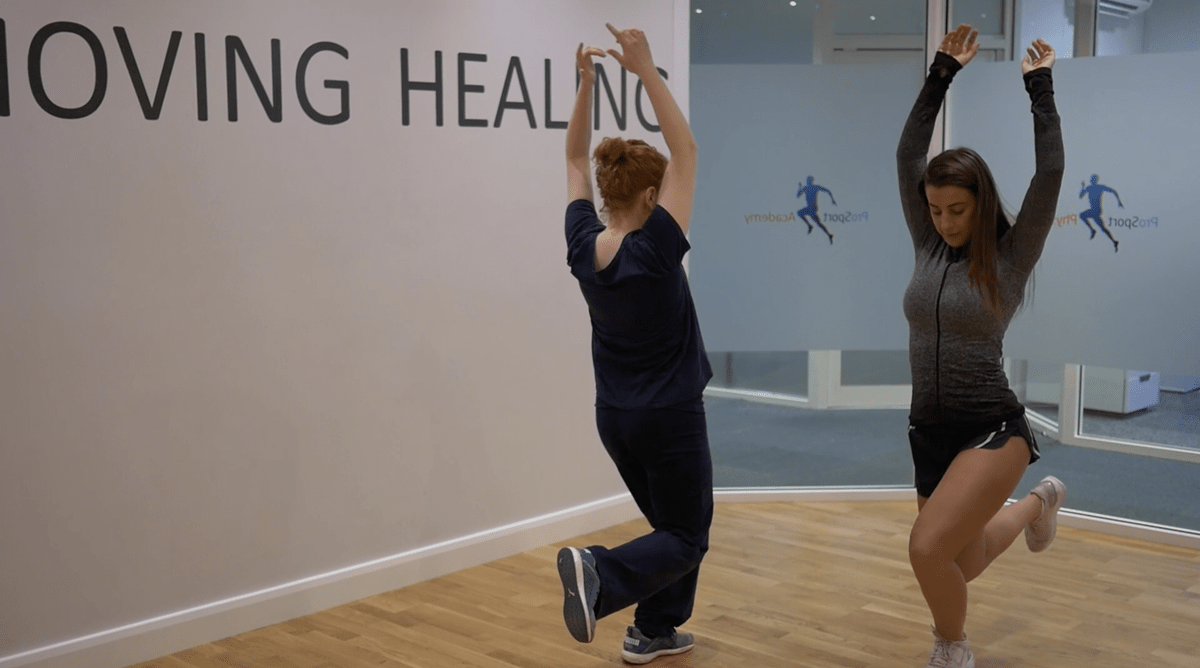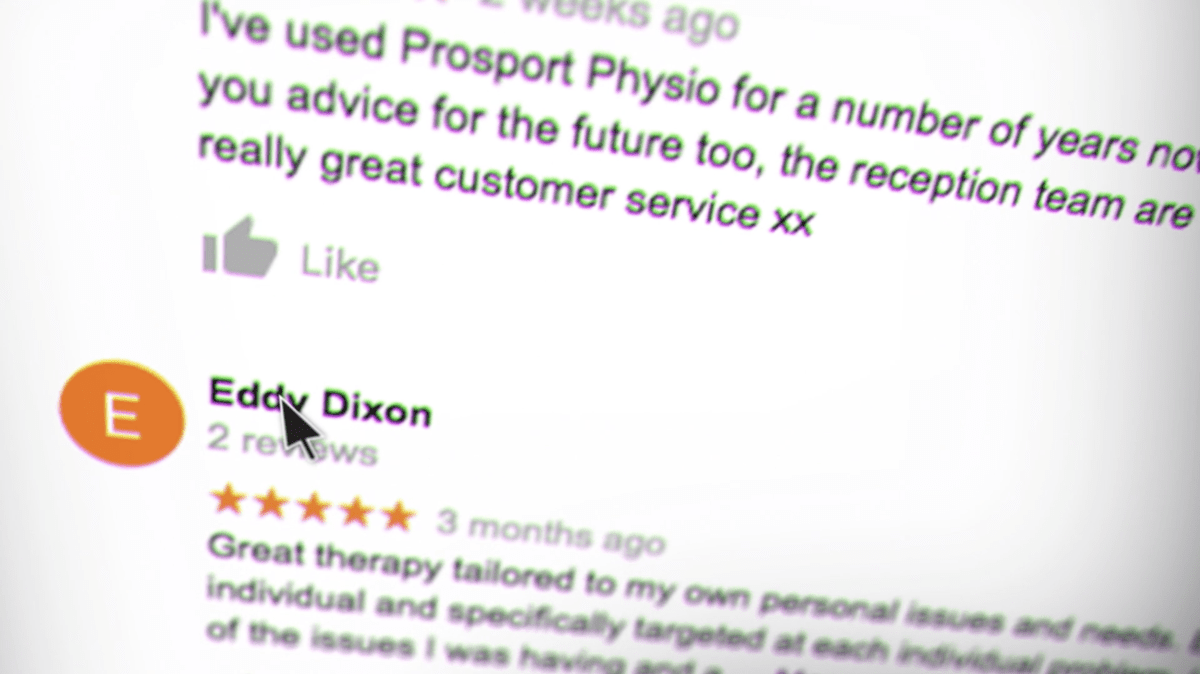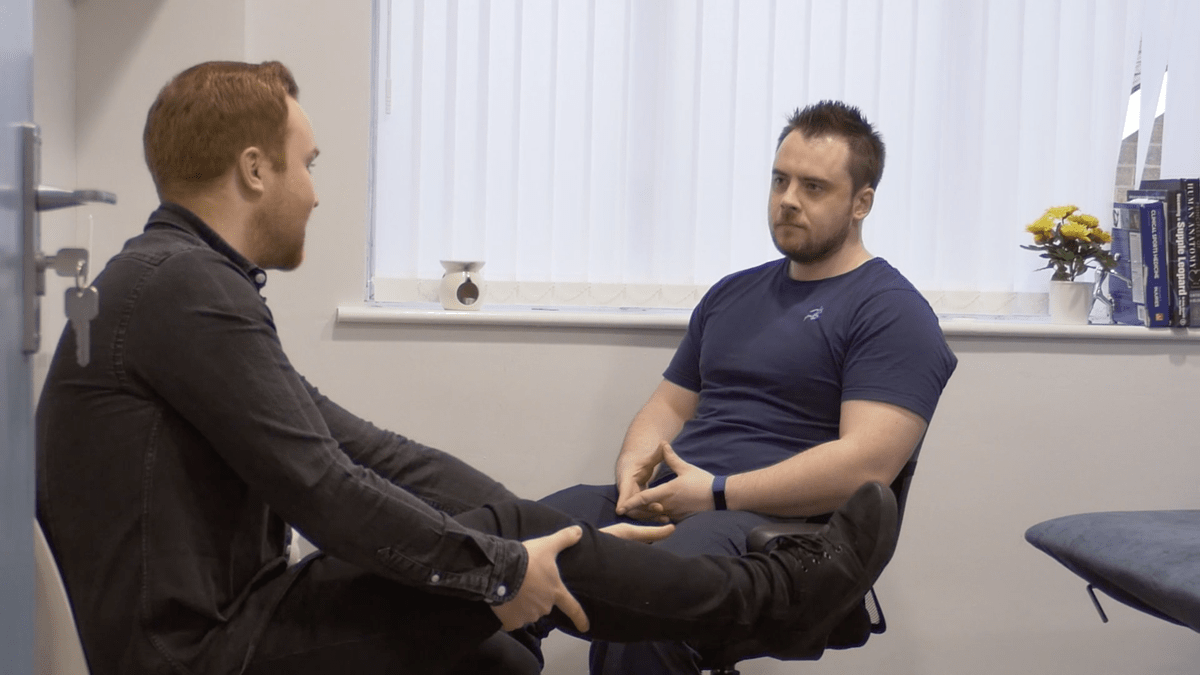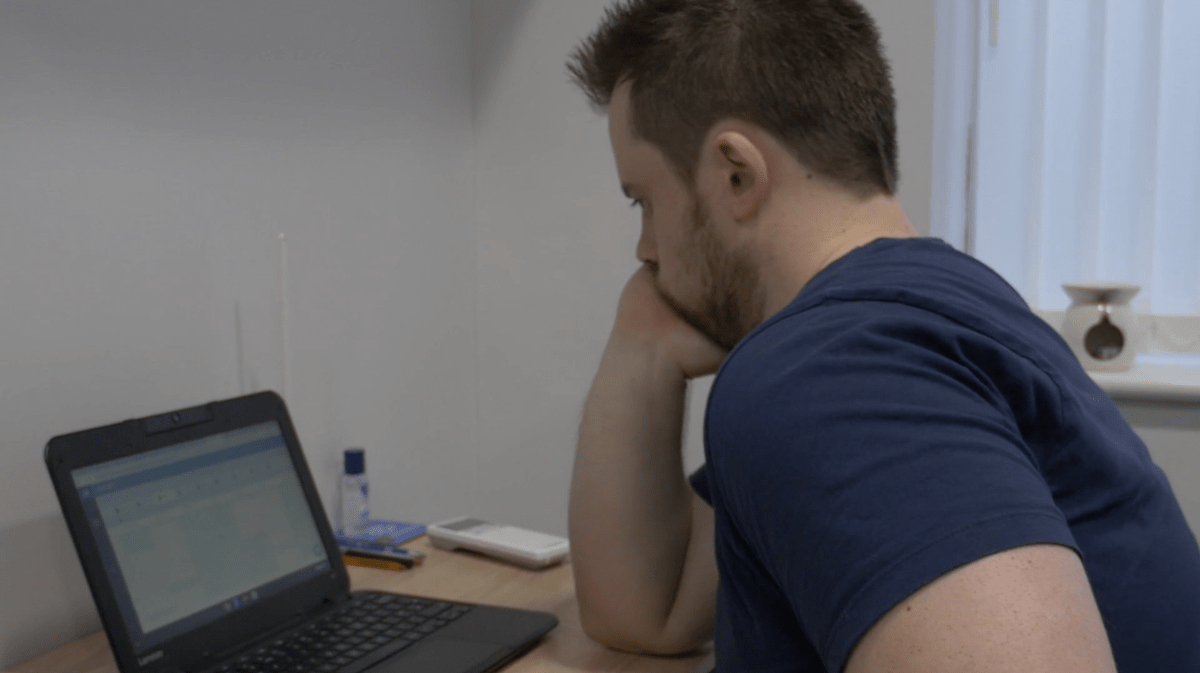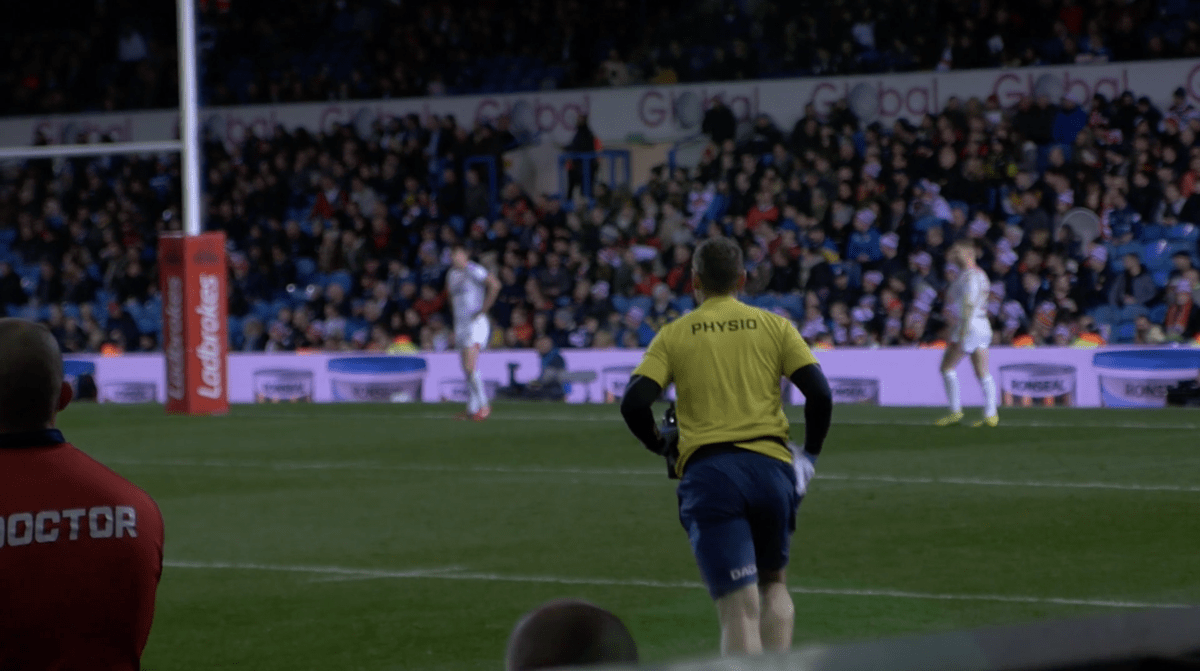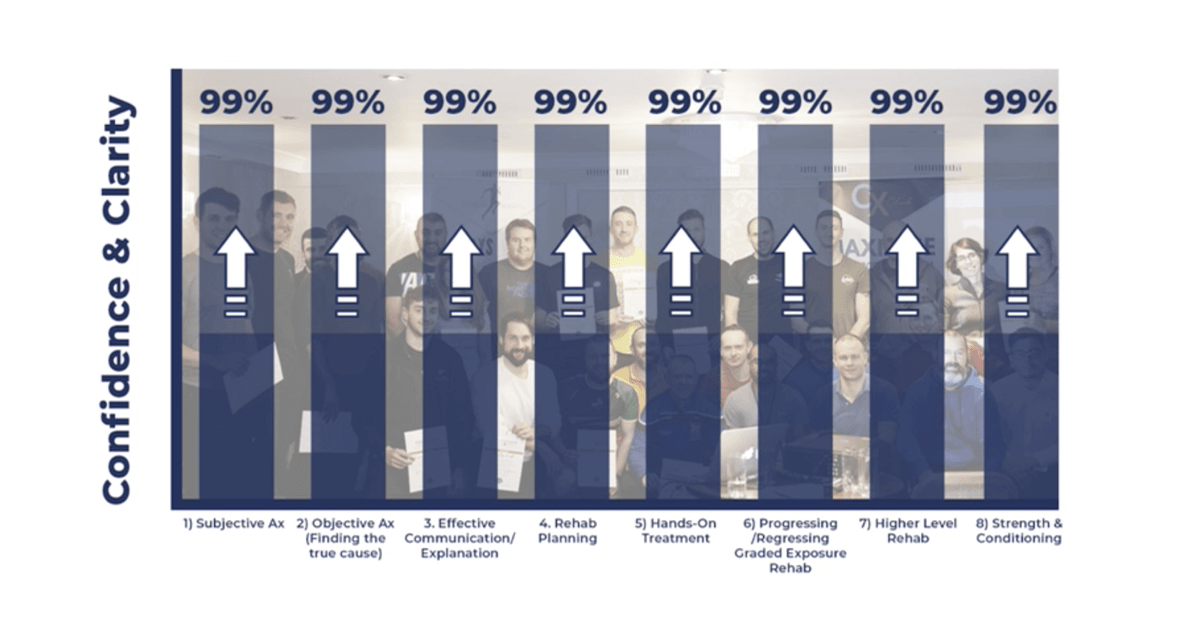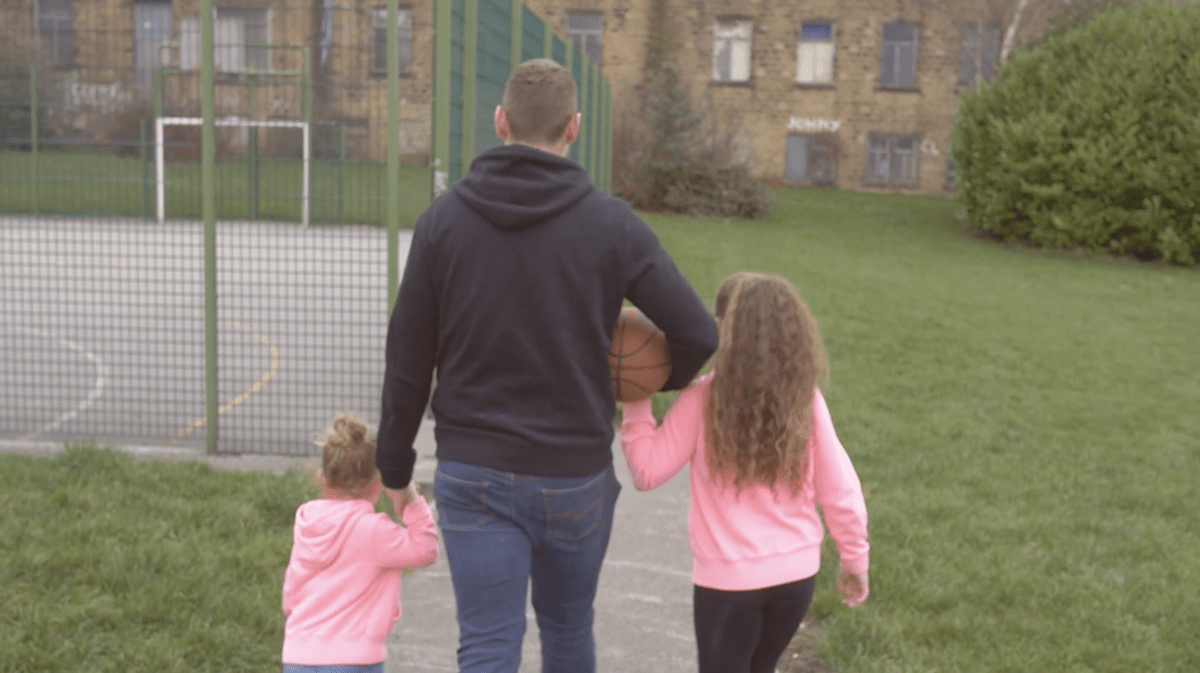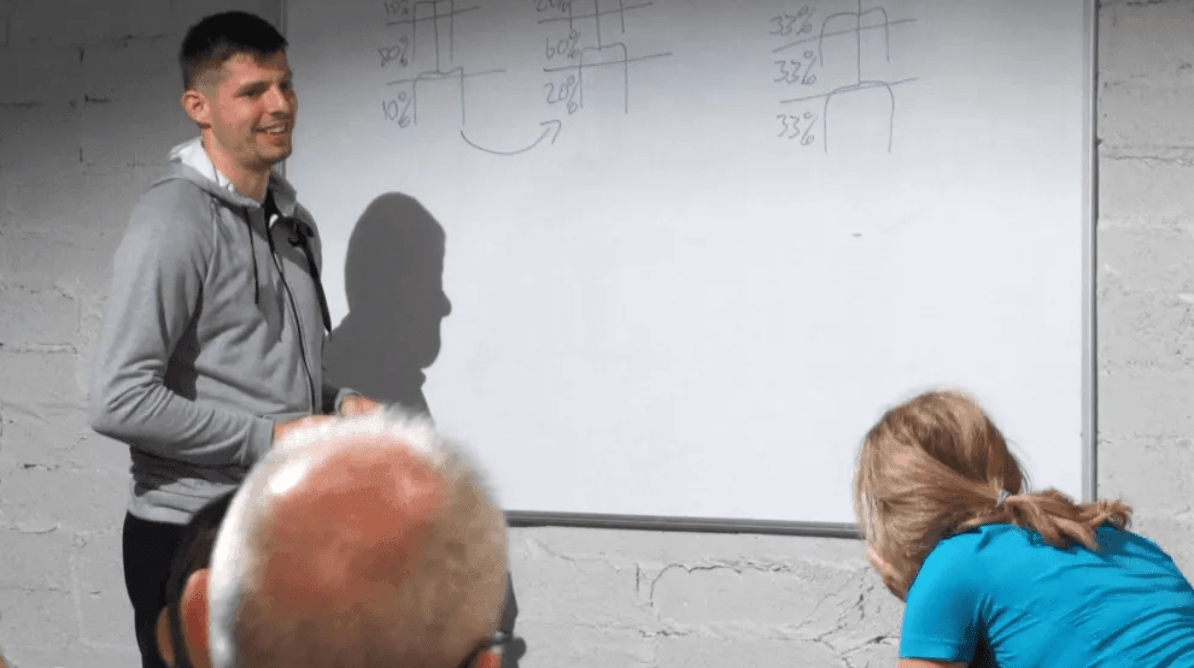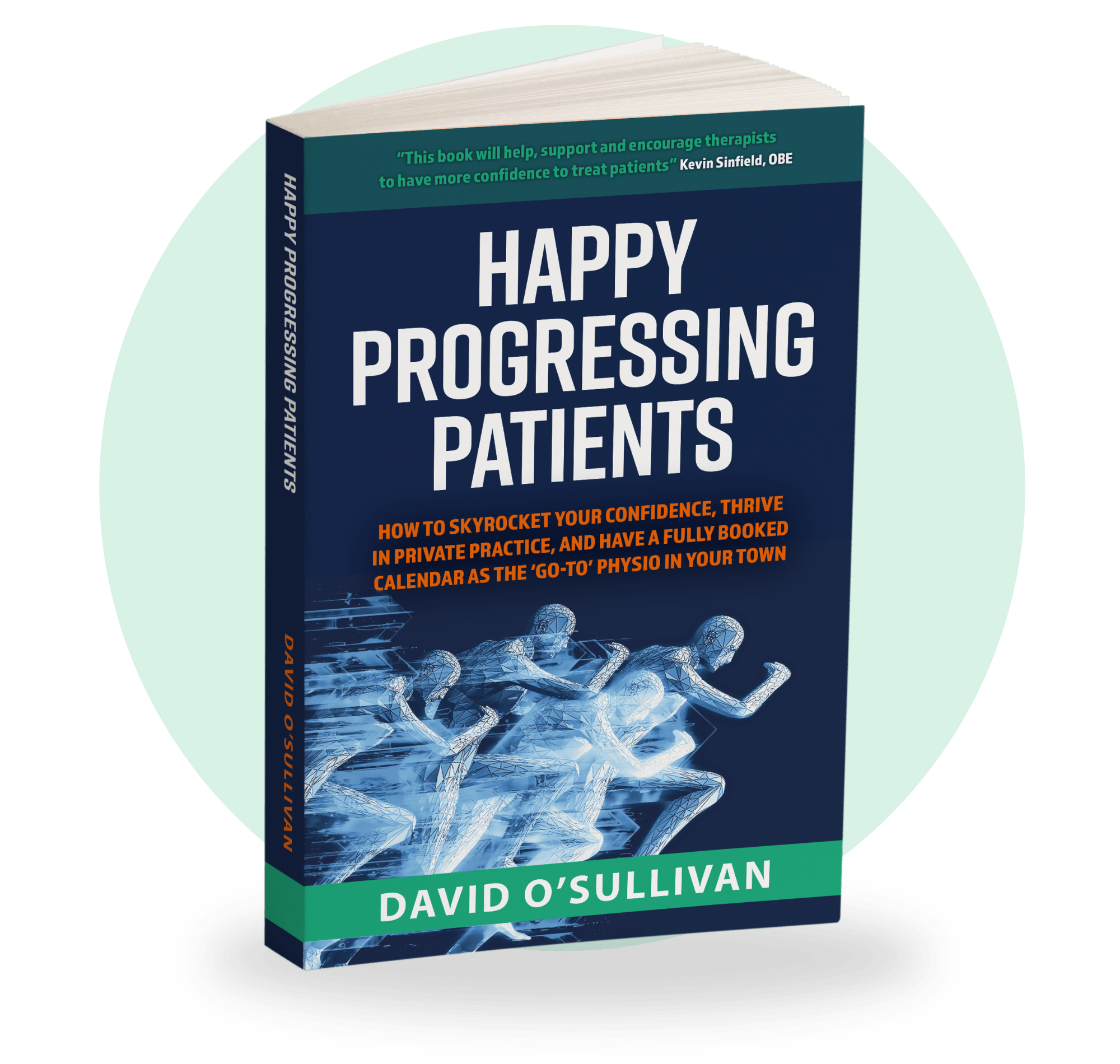
For therapists, a lack of confidence is a huge stumbling block. You’re constantly second-guessing yourself, asking ‘am I missing something?’. But the worst part is if you’re not confident your patients can tell.
I spent years struggling with confidence and it’s one thing I still see in so many other therapists. We invest so much time, energy, and money in education, you feel like you have the knowledge, but confidence is the one piece missing from the puzzle.
That lack of confidence can bring you down. It really can be make or break. You can’t achieve those consistent results, your day is filled with no-shows, your diary is empty, you’re losing revenue and that reputation as the go-to therapist seems further away than ever.
Today I want to show you that gaining confidence as a therapist doesn’t have to be a waiting game. You don’t have to hope that over the next five or ten years confidence will just appear. I want to share a more simple and direct path to getting that confidence you need today.
In this article we’ll cover;
- Symptoms of a lack of confidence.
- What confidence can do for you.
- The crucial role your confidence plays for your patients.
- How physical therapists think you build confidence.
- The real key to having confidence as a physical therapist.
- How one simple step can boost your confidence overnight.
- What this all means for you and your practice.
- What do mentorship graduates have to say about confidence?
- Confidence without clarity.
What Is Confidence In Physical Therapy?
Establishing what confidence is may seem like a simple place to start but 9 times out of 10 physical therapists don’t recognise confidence. They don’t recognise it in themselves and they don’t recognise it in other therapists.
The issue is, as physical therapists and health care professionals, we are so involved and invested that we confuse so many other emotions and feelings as confidence. We look at other physical therapists and think they’re confident. But the grass always seems greener on the other side.
So what is confidence in physical therapy?
Well, the best place to start is clearing up what confidence as a physical therapist isn’t and what a lack of confidence looks like in a clinical setting.
When I was a new graduate I wasn’t confident. I had spent years at university, in placements, and spent so much time, money, and energy on CPD courses. I had the knowledge but I never felt 100% confident.
So what did this lack of self-confidence look like?
Feeling Rushed In An Assessment
I would enter assessment rooms and immediately feel rushed. I would feel like I had to do it all, assessment, diagnosis, and treatment in one session. I felt like I didn’t have enough time. And this is one thing I still see in so many therapists before they start the Mentorship.
The issue is when you do feel rushed you’re more likely to miss something and when it comes to physical therapy missing something means risking something. You can risk your patient’s health and you risk those results.
Stumbling When The Symptoms Aren’t Textbook
When it came to seeing a patient I would go into the room feeling like I was the physical therapist who could really help. Maybe they had been failed by others but I was here to make a difference. As soon as I realised their symptoms or their issues weren’t textbook everything went out of the window.
I’d never seen anything the same before so what would I do? I’d throw everything I had at the assessment and still be none the wiser. It was a recipe for embarrassment.
Over Reliant On Hands-On
Every physical therapist is a hands-on expert. It seems to be the one thing that we all focus on above anything else. But when it comes down to it, it is so easy to become over-reliant on these techniques.
As a new graduate, I knew it gave some pain relief for the patient and if I am being honest I knew that it wasn’t a long-term solution but I wasn’t confident enough to take the first steps away from the bed. I wanted to give the patient what they wanted, a quick fix. It never really was the long-term solution I needed.
Falling Short In Explanation
When it came time to explain to the patient what the issue was, I always fell short. I felt frustrated, angry, and disillusioned by the inability of pain science to impact patients at times.
When you fall short in your explanations then your patient interactions are never going to be what you need them to be. If you’re not confident on what is happening yourself, then how can you explain this to patients?
My patients didn’t know why I was giving them an exercise, they didn’t know what we were working towards, they didn’t bother adhereing to the exercises and treatment plan I gave them. Why would they?
A Mismatch In Expectations
With that lack of confidence in communication and explanation always came one real issue. Patient expectations.
Setting patient expectations was always hard. I didn’t have the ability to match their expectations with their current reality. I had persistent low back pain patients who wanted to run after a week. When I couldn’t help them understand this wasn’t realistic they began to lose faith in my abilities as a physical therapist.
A Recipe For No Shows
The problem with falling short with your explanation and being unable to set patient expectations is that in the long run, patients didn’t think I could help them get rid of their pain and get back to those activities they want to be doing.
Patients didn’t have confidence in me and I didn’t fill them with confidence. They would lose interest in my treatment plan and rehabilitation and I would never see them in the clinic again.
The Pain Returning
A lack of confidence as a physical therapist wasn’t just limited to assessments. When it came to rehab plans and treatment it could all get a bit confusing often at the cost of real positive clinical outcomes. Maybe I’d relieve those symptoms but days, weeks, or months later patients would begin to feel the pain creeping back.
It felt like putting out one fire only for another to start. It was embarrassing and I felt guilty that I couldn’t help these patients. In the end, I felt like I never really had the chance to help them.
Second Guessing At Every Turn
With a lack of confidence, you spent far too much time second-guessing yourself. I wasn’t confident that my treatment and rehabilitation were going to actually work. I was always wondering whether I was even going in the right direction or if I was missing something.
When a therapist has a lack of confidence they tend to just roll from session to session, treating the symptoms as they go but never really having a plan. Patients trust us as physical therapists to know where to go. If you’re not confident with where you’re going then you’re only ever risking results.
Where Do I Go Now And Can My Patient Run?
Ultimately, a lack of confidence all leads to feeling uneasy. Your rehabilitation and treatment are put together by guesswork. Instead of it being simple steps towards building successful patients it becomes an exercise in throwing every idea you have at it and hoping something sticks. Maybe you see some positive results but is this really how you set a patient up for success in the real world?
Are You A Bad Physical Therapist?
Trust me, these were all real feelings I had and most of us have all had at some point or another. Reading it back makes me sound like a terrible physiotherapist. In reality, I wasn’t. What I didn’t know is that all of these ‘symptoms’ I was feeling were characteristics of a lack of confidence in the clinic.
What Does A Confident Physical Therapist Look Like?
Now we know those symptoms of a lack of confidence in the physical therapy clinic we should cover what confident physiotherapists look like and how they work.
Plenty Of Time
If a lack of confidence means you feel rushed throughout your sessions then confidence as a physical therapist does the exact opposite.
You realise you don’t have to assess, diagnose and treat all in one session. Your sessions are pre-planned and constructed. Yes, you want to clear up those symptoms but you understand you’re there to build a successful patient. You understand that you need to find and treat the true cause of the issue.
Unphased By Unconventional Symptoms
You understand that no two patients react to pain and noxious stimulus in the same way. It doesn’t matter if the symptoms are textbook, all you are doing is looking for the true cause of the pain.
Of course, you rule out red flags but you’re not worried about making a diagnosis in one session. You know your process. You look at the patient in front of you, listen to their story, understand their symptoms, and come to logical conclusions.
You clinically reason, build a working hypothesis and use an evidence-based practice of testing, intervention, and more testing to prove or disprove your hypothesis.
No More Relying On Hands-On
You know the place that your hands-on work has but you understand that it will probably not get rid of the issue once and for all. Yes, your patient may enjoy the relief it gives them but you know your effective rehab work is going to do exactly that and more.
Expert Explanation
You understand that maybe patients won’t always respond to your pain science explanation, after all, they didn’t spend years studying physical therapy at university right?
You explain the issue and the journey you will take to get your patient back to their goals. You communicate on a level and it makes sense to your patients.
They understand how long it will take and they may need to do more than just get pain-free to be truly successful. This explanation fills your patients with confidence, they trust you and they trust your body language.
Setting Patient Expectations
Managing patients can be tricky but a confident physical therapist understands that not all patients will have realistic expectations at the very beginning. If they are a persistent low back pain patient and want to be running again after a week, then you use your explanation to match expectations.
You help patients understand that their high expectations may not be realistic and you reframe their outlook ethically.
Ethical Buy-In Patient Adherence
Once your patient understands where they are going and how they will reach their goals, they want to turn up every single session.
Patients can feel and see the progress because you talk them through every step of their physical therapy. Patients want to perform exercises and they want to turn up because they know you can help them back to their goals.
No More Second Guessing
Confidence as a physical therapist comes with confidence in your own treatment plans. You don’t have to second guess yourself… You’re just looking for the true cause of your patient’s pain. Once you establish that then every single step of your rehab is the next logical progression.
You don’t just take your patient to the point at which they’re pain-free and then ‘hope’ they can run. There is no guesswork. You have built confidence in the patient, taken them through a graded exposure treatment programme and they have earned the right to run.
A World-Class Physical Therapist Who Builds Successful Patients
Confidence allows you to focus on finding and treating the true cause of your patient’s pain without becoming overwhelmed. Confident clinicians can build an effective treatment plan that patients want to do, they take each step at a time and each progression is the next logical one and when it comes to it, they know their patient is ready for the real world.
Ultimately, patient satisfaction is number one and a physical therapist who has confidence has a positive effect on all patients. The goal is to build successful patients. But those successful patients do far more for you and your clinic than you know.
Once you can build successful patients, and you can have a truly meaningful impact on their lives then you’re building raving fans. They’re willing to leave a glowing review and recommend their family and friends. Your confidence as a physical therapist leads to clinic growth.
What Your Confidence Means To Your Physical And Occupational Therapy Patients
Of course, physical and occupational therapy is nothing without the patient. We all get so caught up in our own thoughts that most therapists don’t realise how their confidence can impact patients. So, what does your confidence as a physical therapist mean to your patients?
Take your chronic low back pain patient as an example. They have been driven to come to you for help. They’re not coming to you because they’re in pain but because that pain is stopping them from doing something. Maybe they miss walking to the shop or picking up their kids. Whatever it is, it feels like a distant memory.
Whatever your patient thought before they walked into your clinic, your confidence can change. You immediately build the trust they need in you. They understand that you are the one who can help them.
Your confidence, communication, and effective explanation mean your chronic low back pain patient knows that their goals are achievable. Not only that but they know how you will achieve it together. Because they understand the process they spend time doing exercises, they turn up for every session and they know that each session is vital if they want to reach those goals.
Your confidence means your patient feels their progress. They feel that your quality of care is above all others. They may be free of their back pain but they can feel themselves getting closer to their goals, their success, and what Louis Gifford called, ‘thoughtless, fearless movement’.
Ultimately, your confidence makes a meaningful impact on your patient’s life and they can feel it. You don’t just get rid of their low back pain, you add more. You help them achieve things that they thought they most likely wouldn’t do again. They are happy to attend every session and happy to part with money because you give them more in value than you take in payment. They are raving fans and want to tell their family and friends just how you turned their life around.
Your confidence doesn’t just mean you’re comfortable with your assessments and treatment, it does something that so many therapists struggle to do. It builds trust and establishes confidence within your patients…
How Physical Therapists Think You Build Confidence
Often building self-confidence is a misinterpreted part of our work in physical therapy. Most of us have a skewed understanding of how we can gain more confidence and we try for years to do just that.
Most physiotherapists think confidence is just a matter of experience. They think it is a question of waiting ten years until they have seen it all. Well, in my experience this isn’t necessarily true. I have seen plenty of physical therapists working for many years but still waiting for that confidence to come.
They have the knowledge, but like many others, they still treat session to session, they still struggle to explain what is going on to the patient and they still have no-shows on a regular basis. Yes, experience is great but it doesn’t always unlock confidence….
Ask yourself, can you afford to wait ten years to gain more experience and hope that confidence will come then? Can you wait another ten years of empty diary spaces and consistently falling short on results?
Others think the only way to build confidence is through research and reading papers. They’re looking at every clinical trial, data collection, dissecting key findings, performing data analysis, putting this information with similar articles, and building an incredible wealth of knowledge.
Of course, understanding new clinical research is incredibly important. It is key to establish the importance of new information and use it to inform your physical therapy and improve clinical outcomes. But as a clinic owner or a physical therapist seeing 40 patients a week, do you truly have time to read and analyse two to three studies a week along with balancing your home life?
Research is key but do you have the time to do a systematic review of every new paper?
So if these aren’t foolproof ways of ensuring you’re a confident physical therapist then what is? How can you be sure every patient is going to get the best clinical outcomes?
How can you be sure that every patient who walks into your clinical practice gets the outcome and results they need and you deserve?
The Real Key To Having Confidence As a Physiotherapist
When I left university and began working in professional sport I struggled. And I’ll be the first to admit it. I felt like I was thrown in the deep end. But it was two cases in particular that really shook me.
I had two professional athletes retire on my watch. Sure, they had seen other physiotherapists and I had inherited these injuries when I started but I just couldn’t seem to help them. They were two very different patients, with different injuries who needed different interventions. I just didn’t have the confidence to help.
In a sense, I felt like I had let them and myself down. I began to search for a solution. I had the skills and the knowledge but something down the line was going wrong. I shifted my focus. I started to question the importance of these new ‘magic’ exercises I was paying good money to learn. They weren’t doing anything for me or my patients.
I wanted to be considered the therapist that could help those patients who had failed traditional approaches. I wanted those results and that reputation as the go-to therapist. And so I did a systematic review of the way I worked. I picked apart my process, I watched other physical therapists and I listened closely to my mentors. I did all the research I could and I realised that if I needed confidence and I needed results then I had one problem.
I knew the problem was the way I worked, and specifically, I didn’t have a system or a structure. I didn’t truly have a process. I was throwing everything I had at patients in the hope that something may work. I didn’t have confidence because I never truly knew what I was doing and where I was going with a patient.
This may sound too simple but think of it like this… In life, we give things structure for a reason. We give them a structure to make them stronger. An architect has a system to design buildings. A safe system they can return to every time.
Once they have the design they begin by building a solid framework for the building. They don’t design it to come down after ten years. They want their building to last for 500 years and so they give it a solid structure.
It is the same idea with our rehab in physical therapy. Physical therapists need a system for their work because they need a strong way of working. They need a structure to their rehab because they need a framework that builds successful patients no matter how complex the issue is. And just like an architect if we don’t have these two we are taking a risk that our patient will fail.
We may get some relief from that low back pain but the risk is that building will come down, the back pain will return and you’re the only one to blame. Not only do you lose the primary outcome and results you wanted but you risk the health of your patient, you lose their referrals and you forfeit your reputation as the go-to therapist.
How A Simple Step-By-Step System Can Boost Physical Therapist Confidence Overnight
In the Go-To Therapist Mentorship, we don’t deal with ‘life hacks’, we don’t deal with magical exercises or techniques…. We teach principles that give every therapist the keys to unlock their full potential. We teach a system that builds successful patients and successful clinics.
The structured system was created to deal with elite athletes, the high levels of loading, and the complex injuries they experience on the training field or in matches. But it doesn’t stop there, its implications for private practice and non-sporting patients are just the same….
In our system, we teach therapists to have confidence in what I see as 8 key pillars…
- Subjective Assessment.
- Objective Assessment (Finding the true cause)
- Effective Explanation/Communication.
- Rehab Planning.
- Hands-On Treatment.
- Progressing/Regressing Graded Exposure Rehab.
- Higher Level Rehab.
- Strength and Conditioning.
You perform a subjective assessment and objective assessment flowing through the two. You look at your patient and their story, you test, and you put all of the pieces of the puzzle together to dial in and find the true cause of their issue.
Once you can do that you can use an effective explanation to communicate with the patient. Here you set expectations, you help them understand just how many sessions it will take to reach their goals. Once they understand this it cements patient exercise adherence and buy-in to your treatment plan.
If you have complete confidence in your rehab planning you’ll be able to create world-class treatment plans for the individual. That rehab doesn’t just focus on the symptoms but on the true cause of their pain. It is no longer a case of guesswork. You can map out exactly how you’re going to reach those goals and how you’ll stop the symptoms from returning.
Everyone is an expert in hands-on but with confidence, you can truly begin to understand where it sits in your treatment. You know it is important but you’re not over-reliant on it. You understand that just using hands-on is not a substitute for your full rehab programme.
One of the cornerstones of the mentorship is giving physical therapists complete confidence on when and where to progress and regress with their patients. Every single step of your graded exposure treatment programme is the next logical progression. You’re not hoping your patient is ready to run you know they are but you also have the confidence to take it back to ensure their success at the end.
Your higher level rehab is a tool to help you bridge that gap with every patient. So many therapists take their patients to the ‘pain-free zone’ and stop. They don’t use their higher-level rehab to truly set that patient up for success in the real world. It isn’t just about making progress, it is about keeping that progress when those patients go back to life. Confidence in your higher-level rehab is about discharging patients knowing you won’t be receiving phone calls or have to follow up because their pain has come back.
Finally, in the mentorship, we want every therapist to be confident in strength and conditioning. Although it may be the final stages it doesn’t make it any less important. It is another crucial part of the structure and step-by-step system that sets your patient up for success.
What Does This System Mean For You?
A system gives confidence to anyone who chooses to implement it in their physical therapy work. I won’t pretend my system is the only way to work, it definitely isn’t, but for my athletes, my private practice patients, and over 700 therapists worldwide it has given us all results.
If every physical therapist has confidence in these 8 pillars and they give you results then something great happens. It has this huge knock-on effect.
You begin to make real meaningful impacts on every patient. Those patients immediately want to share their experiences and how much you have done for them with others. They’ll tell anyone in a split second. They’re your word-of-mouth referrals.
Those same people are the ones who will leave those glowing reviews online. They’re the reason other people know how much value you can give to every patient. When someone is looking for physical therapists near them, then your reviews are the first thing they see.
Through those reviews, referrals, and an ethical retention of patients you see an increase in revenue. Not only that but you can begin to charge what you are truly worth.
Things start to snowball and you’re beginning to build that reputation as the go-to therapist in your area. People will travel to you because they know you can help them and they know how much your work has meant to others.
Ultimately, all of this gives you freedom. It gives you financial freedom for you and your family. You have the freedom to cut down your hours so you can spend more time doing what you enjoy. You get your weekends back and you no longer have to spend sleepless nights worrying whether you can fill the diary or if you have done the right thing with a patient.
What Do Our Mentorship Graduates Have To Say About Confidence?
When I set out to create a structured system for my own work in physical therapy I didn’t quite think that by now, over 700 physical therapists around the world would be using the exact same process to achieve real results with the most complex of musculoskeletal conditions day-in-day-out.
It is all well and good knowing what gaining confidence through applying a system can do for you but it always means more to see how therapists are implementing it in the real world. The power for me comes when I listen to our graduate physiotherapists and hear how their understanding, focus, clinical practice, and lives have changed by simply having a structure, system, and confidence….
When we all caught up at one of our regular refresher courses I asked a few therapists what the mentorship meant to them and their confidence….
How has the mentorship changed your confidence in your work?
It’s [the mentorship] really helped with my confidence. I was always confident in my treatment and my results but it’s given me that clarity and confidence that I know exactly where I’m going to go next with my clients, no matter who it is, any person that walks in the door I know I have the tools to treat them and help them so it has been huge in that regard. – David Grey
How has the mentorship changed your interactions with your patients?
Someone makes contact with me I have a step-by-step basis. I know where it’s going to hopefully end if they come on board but then I can break it down into steps instead of before, being a bit nervous that I didn’t know what the final outcome would be. I definitely think there is a lot of clarity now in my plans, in my assessments of the person and definitely engaging with people and making them feel confident in you, which is a big thing. – Paudie Brean
Would you say you were a confident therapist before you began working with the mentorship system?
My confidence when starting out was pretty low and when I joined the mentorship it was a big step going forward. Now I’ve set up my own clinic and I’m out there. I have clients coming in with confidence in a progression plan for each individual to go by. You can have help with the Shane and Dave with feedback and you can ask them questions if you’re unsure of something. – Clodagh Mcgrath
Confidence Is Nothing Without Clarity
Confidence can mean everything when it comes to your work. Once you have it there is no looking back. You’re achieving the results you need, creating raving fans, seeing an ethical increase in revenue, and building that reputation. But there is one other thing every therapist needs to thrive. That is clarity.
Confidence is nothing without clarity. You can be the most confident therapist in the room and have all the faith in your rehab, you can master an effective explanation but if you don’t have the clarity then you always risk stalling.
Have confidence in your work and in your rehab. Be confident in your ability to achieve your patient’s goals but have the clarity to know how to get there.
Final Thoughts On How You Can Build Your Confidence As A Physical Therapist
I would never lie to anyone and say a career in physical therapy is easy. If you’re anything like me then it can be challenging but this means there is more of a reason for you to do everything in your power to get the confidence and clarity you need to set your patients and your clinic up for success.
Confidence and clarity are always underestimated. A therapist may not be getting the results they need, they’re losing patients each week, and their reputation is gone, but they think they can wait it out. Another year or so and they’ll have that experience…
But can anyone afford to spend another few years waiting around hoping the issues within their clinic will work themselves out? For me, it was obvious, I couldn’t afford to wait so I wasn’t going to. I wanted to take a step forward to reach out for success for myself and a future for my clinic and for my family. And it all started by choosing confidence and clarity through a simple step-by-step system.
If you want more information on the most direct way to boost your confidence and implementing your own structured step-by-step system, click the banner below and book your FREE 30-minute strategy call and we can start planning your future.
Get Your FREE Copy Of The Amazon #1 Bestseller That Holds The Secret To Confidently Treating Any Patient!
Download a Free ‘ebook’ copy of the 8-Step ‘World Cup’ Treatment Plan that helped my private patients achieve full recovery and made me a ‘go-to’ physio for complex cases…

